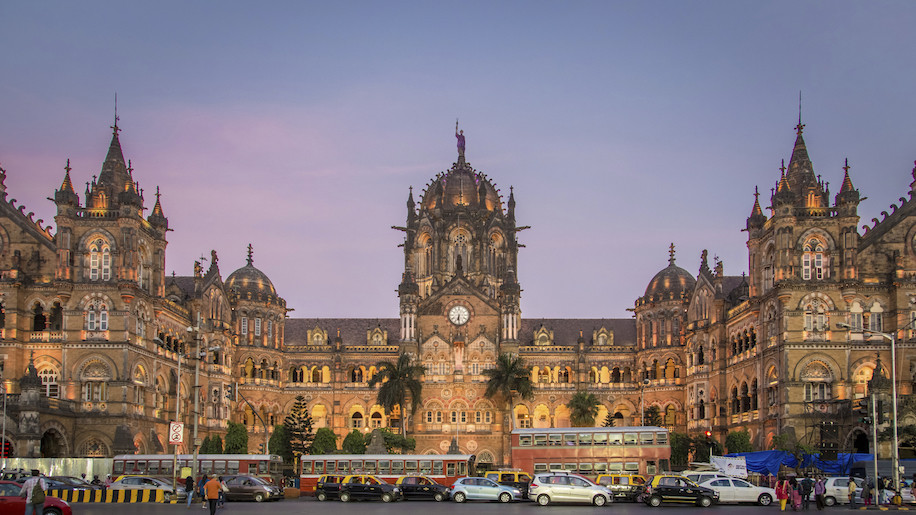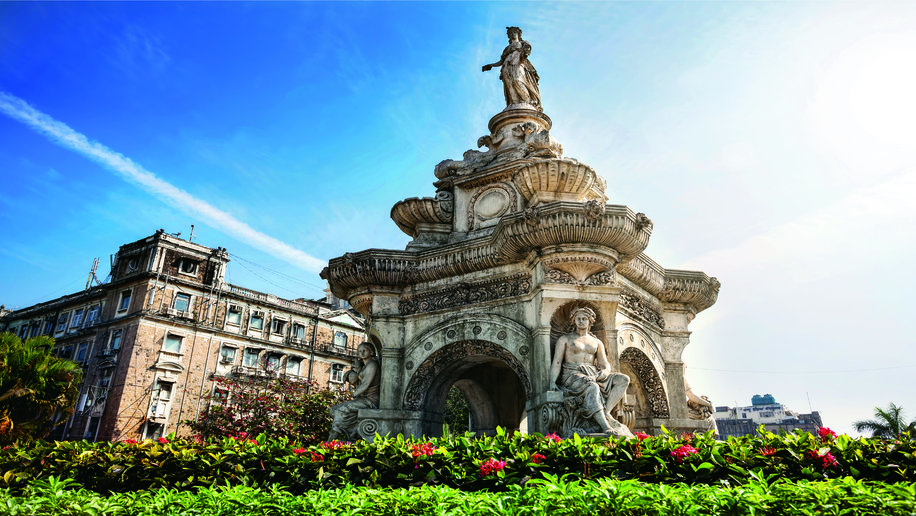
A beautiful chaos is what Mumbai will always be to me.
Amidst the banter of locals, the clammer of peddling hawkers and shrieking brakes of kaali-peelis (black and yellow cabs), stand in tranquillity the relics of Colonial Bombay. This contrasting backdrop makes for the intrinsic personality of Mumbai. While the skyscrapers of South Mumbai daunt imperial British structures with their towering metallic facades, the latter’s charm is unparalleled.
There is a sense of splendour in dilapidation. Tales of Mumbai’s bygone era are entrenched deep within the walls of these enchanting edifices. A few hours spent walking through the southern part of this fast-paced city means chancing upon corners and streets embellished with Gothic, Victorian, Art-Deco, Indo-Saracenic and contemporary architectural styles.
Growing up in Mumbai, I remember driving pass the Rajabai Clock Tower situated in Mumbai University’s grounds, and drawing resemblances with London’s Big Ben.
It was interesting to learn that its architect Sir George Gilbert Scott had in-fact modelled it on the lines of the original English monument. The Tower’s construction was completed in 1878 and was built fusing Venetian and Gothic-styles of architecture. Walking alongside the structure, a chime of the hands of the clock can be heard every 15 minutes — a sound that replaced the former tunes of “God Save the King” and “Rule Britannia” from the era of the British Raj.
While even the most modest buildings of Mumbai easily overpower the Rajabai Clock Tower today, it was the tallest edifice of its time. The Tower’s interiors are built using four key stones including grey green basalt and Porbundar (a place in Gujarat). It houses intricately carved flooring, and Burma teak and rosewood structures across its five storeys. After being closed for a period of two years for restoration, it opened its doors once again, last year, to the public.

Not too far away, perhaps even walking distance for the daunting kind (walking on the streets of Mumbai involves the dodging of human and automobile traffic) is the Chhatrapati Shivaji Terminus. It is still referred to as its Colonial name — Victoria Terminus — or abbreviated as VT, by the denizens of Mumbai. According to Christopher London, architectural historian, the Victoria Terminus is to the British Raj what the Taj Mahal is to the Mughal empire.
This area is almost always too crowded to stop by and admire the details of this imposing building. Visiting at the crack of dawn allows me to observe this magnificent amalgamation of Gothic, Victorian, Hindu and Islamic styles of architecture. This marvel can compete with some of the best railway stations of the world, in terms of design.
While the extensive ground plan takes from Indian palaces, the stunning dog-faced gargoyles are influenced by the Gothic-style. The large dome that makes for the focal point of the monument, is embellished with a statue of a lady holding a torch and spoked wheel, signifying progress, with conical minarets on both the sides. Its interiors have dulled overtime but still emulate British India’s old-world charm in its high ceilings, detailed carvings, gargoyle statues at the top of the corners and the colossal grandfather clock.
A ten minute walk from here will bring you to one of my favourite parts of the city. Now home to high-end French brands such as Christian Louboutin and Hermès, Horniman Circle is a facade of curved colonial buildings that surrounds the Horniman Circle Gardens, a large green expanse that is known to hold discerning concerts and art-festivals of the city.
An aerial view of this labyrinth would help understand the uniformity and symmetry in its layout. Walking across the area none-the-less is a treat to the eye and a rendezvous with Mumbai’s imperial history. The complex was laid out in 1869 by James Scott, as a part of the British redevelopment plan of Bombay and was previously called Elphinstone Circle after the governor of 18th century Bombay, Lord Elphinstone. Its name was changed to Horniman Circle post 1947, as a tribute to the editor of Bombay Chronicle and supporter of India’s independence — Benjamin Horniman.
Facing the Gardens is the Town Hall, a part of the Asiatic Society of Mumbai. Another example of architectural excellence, the white pillared structure is built at a height, and can be reached after climbing a fleet of 30 steps. The palatial edifice was designed by Colonel Thomas Cowper in 1833 who drew influences from the Greek and Roman styles of architecture for this masterpiece. It is known to house rare manuscripts and treasures including 1,000 ancient coins, some even from the time of India’s Mughal reign.

While speaking about the city’s colonial architecture, it would be unfair to rule out the majestic Flora Fountain, that stands in the middle of a chaotic junction of roads in the heart of Mumbai’s Fort. Not too far from Horniman Circle is this iconic structure built in white Portland stone by architect Richard Norman Shaw. Placed atop is the statue of the Roman Goddess of spring and beauty — Flora, with four other Roman figures on its corners. The water continues to flow through the Fountain until today and this monument comes alive at dusk, on a humid Mumbai evening. The bustle of screeching cars and the pandemonium of human and animal traffic add a contrasting liveliness to the Flora Fountain, as it reflects its strategically placed lights.
Mumbai is full of surprises. Even as a local, every day is an adventure lined with beautiful contradictions. It is here that charm and chaos co-exist in perfect harmony with one another; an irony that I perhaps may never fall out of love with.












